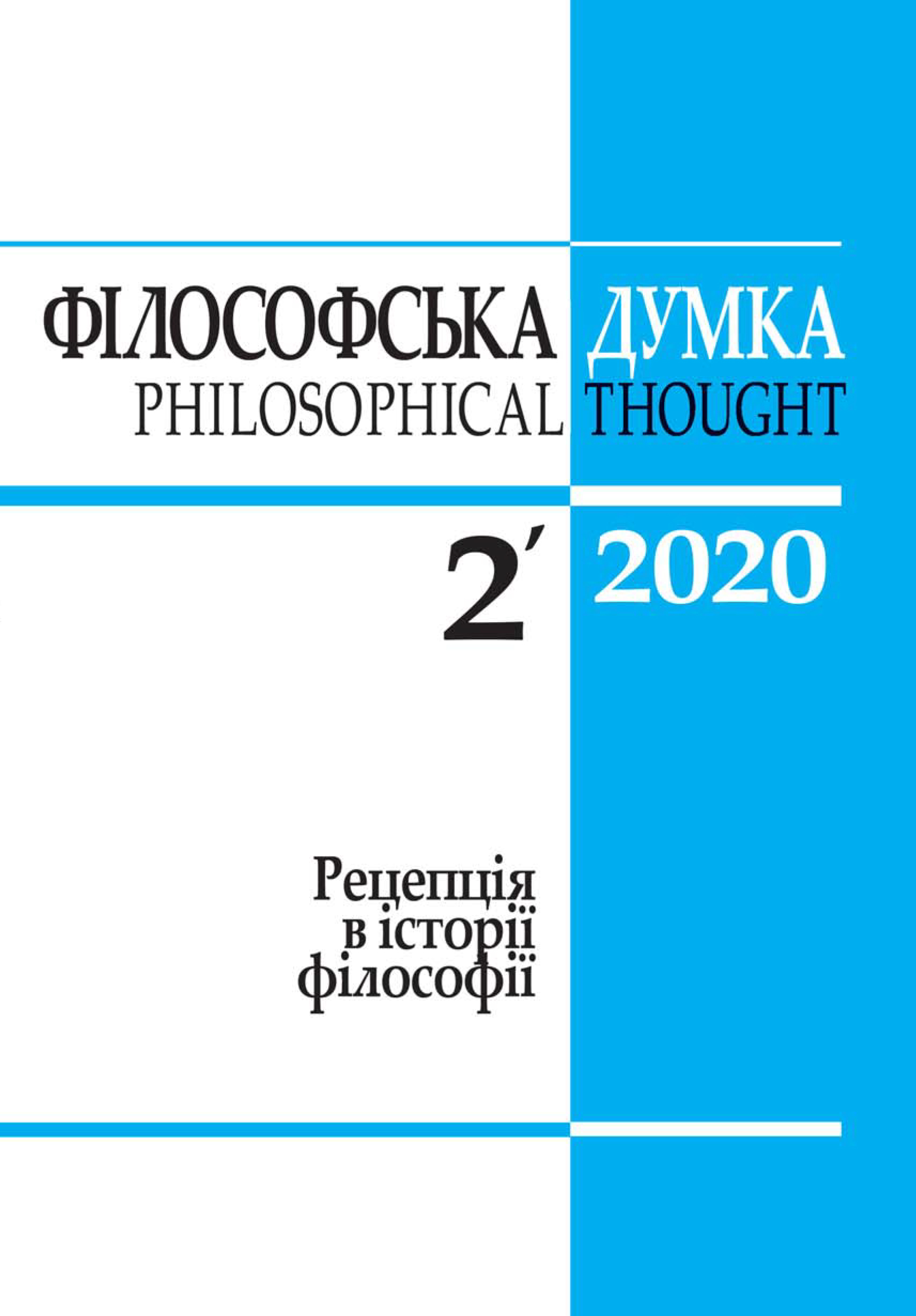Vasyl Prits, Volodymyr Kuznetsov. The main features of the cosmological picture of the world
PHILOSOPHY OF SCIENCES
DOI:
https://doi.org/10.15407/fd2020.02.086Keywords:
cosmology, philosophy of cosmology, Universe, picture of the worldAbstract
Physical cosmology is one of the disciplines at the forefront of modern science. Using existing physical theories and creating own ones, it describes the dynamics and evolution of the Universe, transforms and modernizes the scientific picture of the world on the largest possible scale. The article analyzes the main presuppositions and outcomes of nowadays cosmology, which are based on fundamental physical principles (theories) and astronomical observations. It has been revealed that throughout its existence as a science (about 100 years), cosmology stimulated the emergence of a plenty of worldview-philosophical problems. Therefore, we need a comprehensive update of the philosophy of cosmology, which can help to realize such problems. Given the need for cooperation between cosmology and the philosophy of science, we propose to use various methodological, ontological, epistemological and other philosophical techniques to solve philosophical problems arising in cosmological research, as well as to generalize the existing knowledge about the Universe.
References
Vvedenskyi, A. (1897). On Atheism in Spinoza's Philosophy. [In Russian]. Voprosy filosofii i psikhologii, 37 (2), 157-184.
Zasov, A., Postnov, K. (2011). General Astrophysics. [In Russian]. Friazino: Vek 2.
Kuznetsov, V. (1977). Philosophical Analysis of the Foundations of Particle Physics. [In Russian]. Kyiv: Naukova Dumka.
Kuznetsov, V., Burgin, M. (1992). The World of Theories and Power of Mind. [In Russian]. Kyiv: Ukraina.
Popov, S. (2000). Large-scale structure of the universe. [In Russian]. Retrieved from: http://www.astronet.ru/db/msg/1171366
Russel, B. (2017). The art of rational conjecture. [In Ukrainian]. In: Ja.V. Shramko (Ed.), Actual problems of spirituality (vol. 18, pp. 81-97). Kryvyi Rih.
Burgin, M.S., Kuznetsov, V.I. (1993) Properties in science and their modelling. Quality and Quantity, 27, 371-382.
https://doi.org/10.1007/BF01102499
Carroll, S. (2019). Something Deeply Hidden. Quantum Worlds and the Emergence of Spacetime. S.l.: Penguin Group (USA) LLC - Dutton.
Chaboyer, B., Krauss, L.M. (2002). Dark energy and the Hubble age. Retrieved from: https://arxiv.org/abs/astro-ph/0212369. DOI: 10.1086/382121.
https://doi.org/10.1086/382121
D'Agostini, G., Petit, J.P. (2018). Constraints on Janus cosmological model from recent observations of supernovae type Ia. Astrophysics and Space Science, 363 (7), 139. DOI: 10.1007/s10509-018-3365-3.
https://doi.org/10.1007/s10509-018-3365-3
Dienes, K.R. (1997). String Theory and the Path to Unification: A Review of Recent Developments. Retrieved from: arXiv:hep-th/9602045. DOI: 10.1016/S0370-1573(97)00009-4.
https://doi.org/10.1016/S0370-1573(97)00009-4
Dyson, L., Kleban, M., Susskind, L. (2002). Disturbing Implications of a Cosmological Constant. Retrieved from: https://arxiv.org/abs/hep-th/0208013. DOI: 10.1088/1126-6708/2002/10/011.
https://doi.org/10.1088/1126-6708/2002/10/011
Einstein, A. (1917). Kosmologische Betrachtungen zur allgemeinen Relativitätstheorie. Sitzungsberichte der Königlich Preußischen Akademie der Wissenschaften, 1, 142-152. DOI: 10.1007/978-3-663-19510-8_9.
https://doi.org/10.1007/978-3-663-19510-8_9
Ellis, G. (2014). Why does cosmology need philosophy? Retrieved from: https://plus.maths.org/content/phil-cos.
Falck, B. (2018). Why cosmology without philosophy is like a ship without a hull. Retrieved from: https://aeon.co/ideas/why-cosmology-without-philosophy-is-like-a-ship-without-a-hull.
Frieman, J., Turner, M., Huterer, D. (2008). Dark energy and the accelerating Universe. Annual Review of Astronomy and Astrophysics, 46 (1), 385-432. DOI: 10.1146/annurev.astro.46.060407.145243.
https://doi.org/10.1146/annurev.astro.46.060407.145243
Hawking, S. (2011). Why are we here? In: Google's Zeitgeist Conference. Retrieved from: https://www.youtube.com/watch?time_continue=25&v=r4TO1iLZmcw&feature=emb_title.
Hubble, E. (1929). A relation between distance and radial velocity among extra-galactic nebulae. Proceedings of the National Academy of Sciences, 15, 168-173. DOI: 10.1073/pnas.15.3.168.
https://doi.org/10.1073/pnas.15.3.168
Kirshner, R.P. (2003). Hubble's diagram and cosmic expansion. Retrieved from: https://pdfs.semanticscholar.org/c0ce/fe53e0d859d926f98651fa267f31ca7b97a7.pdf. DOI: 10.1073/pnas.2536799100.
https://doi.org/10.1073/pnas.2536799100
Krauss, L. (2012). A Universe from Nothing: Why There Is Something Rather than Nothing. New York: Free Press.
Krauss, L., White, M. (1992). Gravitational lensing and the variability of G. Astrophysical Journal, 397, 357-361. DOI: 10.1086/171792.
https://doi.org/10.1086/171792
Narlikar, J.V. (2010). Fred Hoyle's Universe. Retrieved from: https://www.ias.ac.in/article/fulltext/reso/015/10/0875-0904. DOI: 10.1007/s12045-010-0100-y.
https://doi.org/10.1007/s12045-010-0100-y
Novosyadlyj, B., Tsizh, M. (2017). Voids in the Cosmic Web as a probe of dark energy. Retrieved from: http://www.icmp.lviv.ua/journal/zbirnyk.89/13901/art13901.pdf. DOI:10.5488/CMP.20.13901.
https://doi.org/10.5488/CMP.20.13901
Oerter, R. (2006). The Theory of Almost Everything: The Standard Model, the Unsung Triumph of Modern Physics (Kindle ed.). New York: Penguin Group. DOI: 10.1063/1.2337829.
https://doi.org/10.1063/1.2337829
Riess, A., Filippenko, A., Challis, A. et al. (1998). Observational evidence from Supernovae for an accelerating Universe and a cosmological constant. The Astronomical Journal, 3, 1009-1038. DOI: 10.1086/300499.
https://doi.org/10.1086/300499
Schlipp, P. (1949). Albert Einstein, Philosopher-Scientist. New York: Tudor Publishers.
Spergel, D.N. et al. (2003). First-year Wilkinson Microwave Anisotropy Probe (WMAP) Observations: determination of cosmological parameters. Astrophysical Journal Supplement Series, 148, 175-194. DOI: 10.1086/377226.
https://doi.org/10.1086/377226
Visser, M. (1993). Hawking radiation: a particle physics perspective. Retrieved from: arXiv:hep-th/9204062. DOI: 10.1142/S0217732393001409.
https://doi.org/10.1142/S0217732393001409
Wood-Vasey, W.M. et al. (2007). Supernovae are good standard candles in the near infrared: Evidence from PAIRITEL. Retrieved from: https://arxiv.org/abs/0711.2068. DOI: 10.1086/592374.
https://doi.org/10.1086/592374
Zinkernagel, H. (2014). Philosophical aspects of modern cosmology. Studies in History and Philosophy of Modern Physics, 46, 1-4. DOI: 10.1016/j.shpsb.2013.12.001.
Downloads
-
PDF (Українська)
Downloads: 547
Published
How to Cite
Issue
Section
License
Authors who publish with this journal agree to the following terms:
- Authors retain copyright and grant the journal right of first publication.
- Authors are able to enter into separate, additional contractual arrangements for the non-exclusive distribution of the journal's published version of the work (e.g., post it to an institutional repository or publish it in a book), with an acknowledgement of its initial publication in this journal.
- Authors are permitted and encouraged to post their work online (e.g., in institutional repositories or on their website) prior to and during the submission process, as it can lead to productive exchanges, as well as earlier and greater citation of published work (See The Effect of Open Access).


